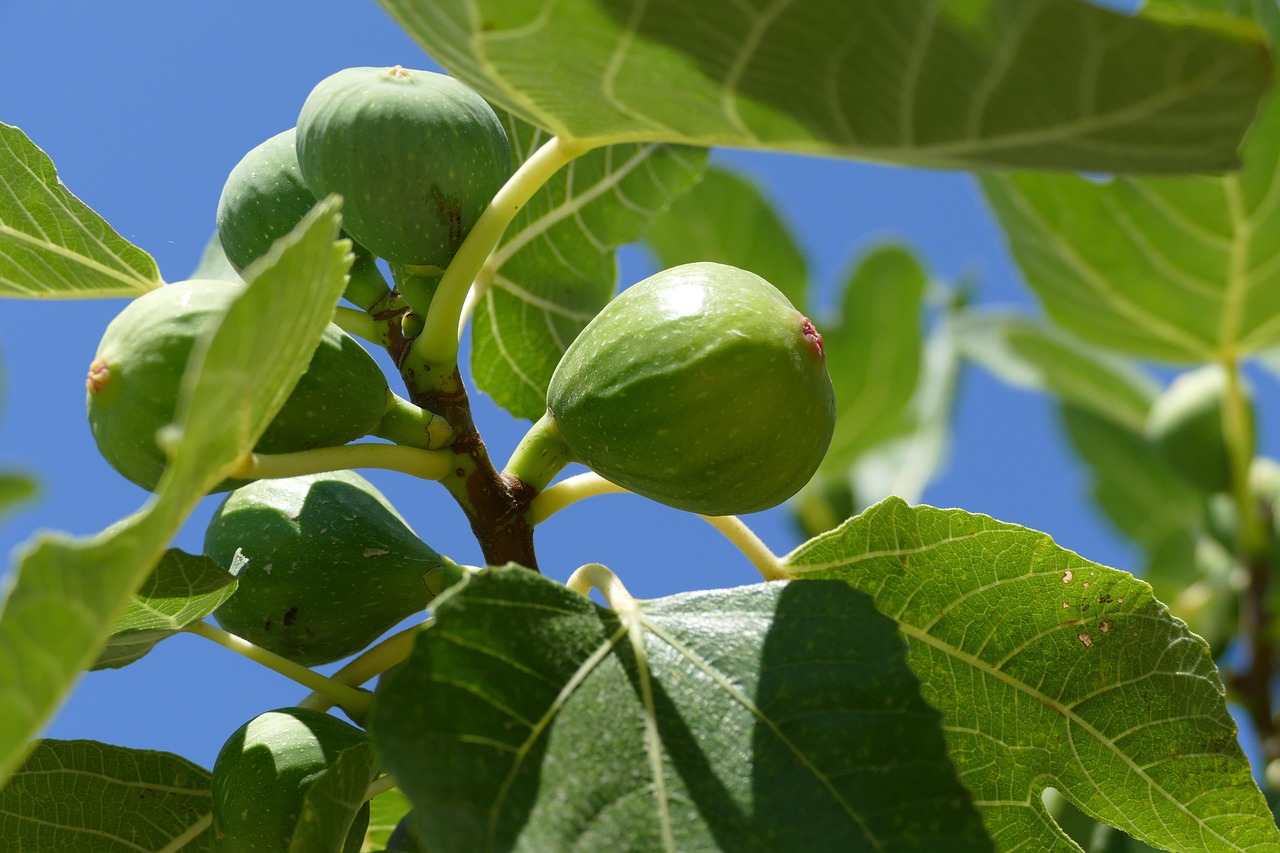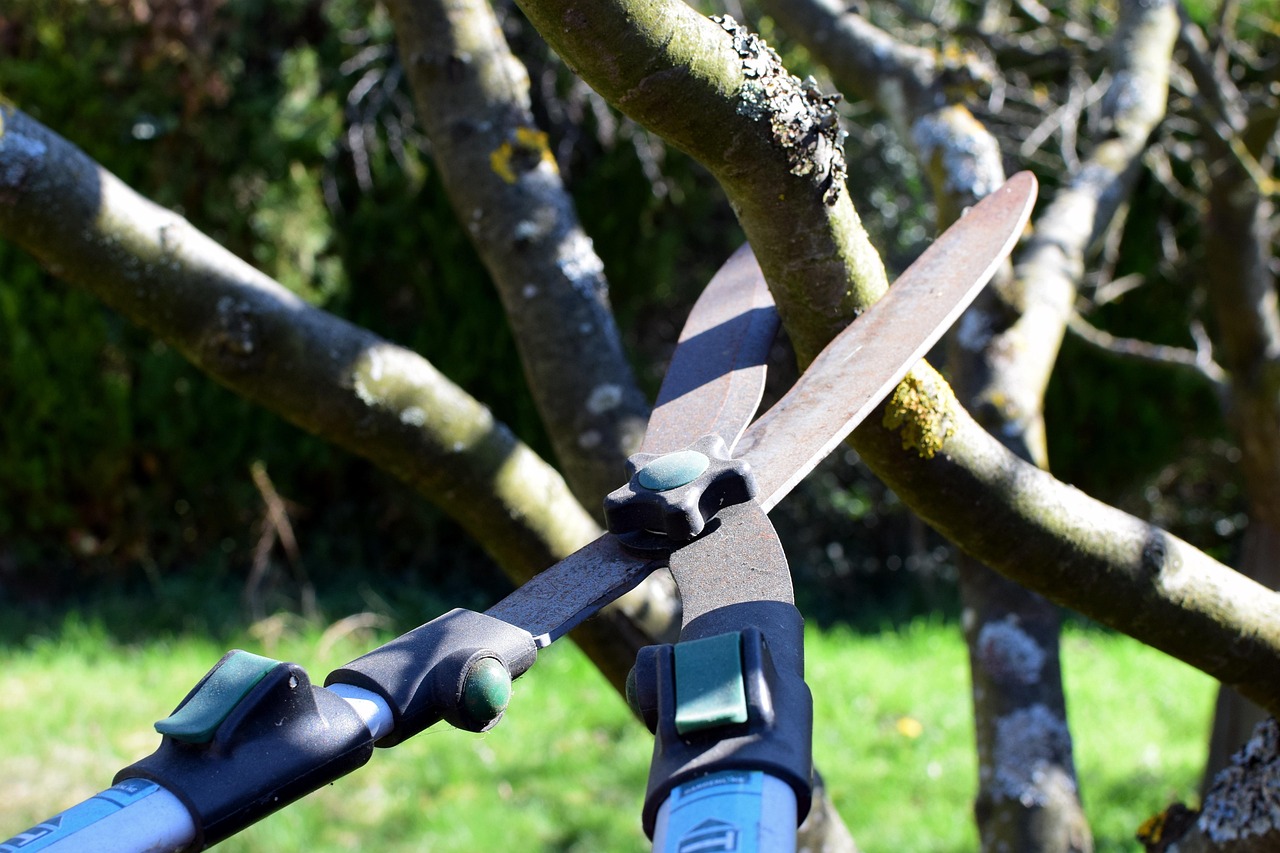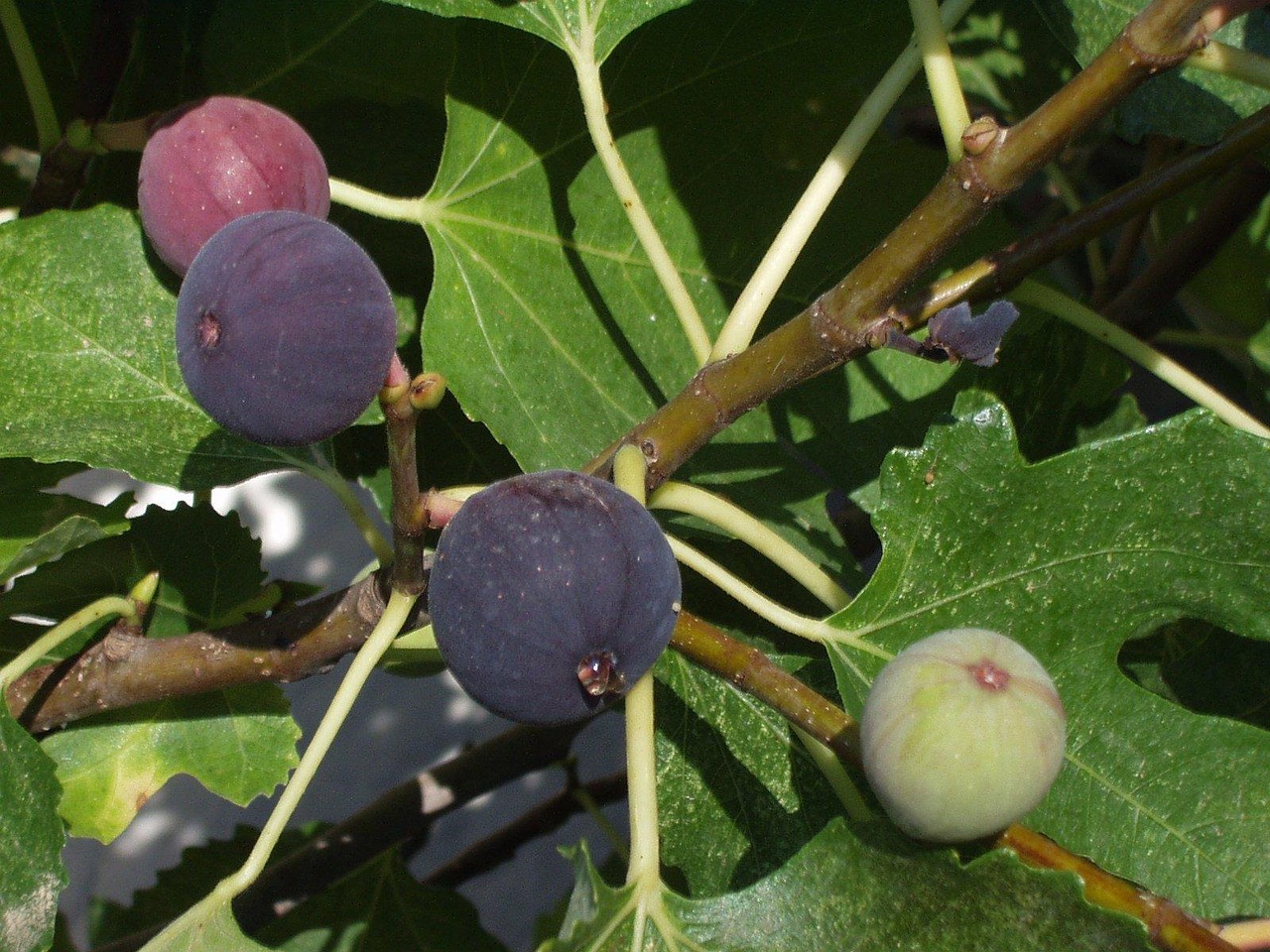Pruning fig trees in warmer climates is essential for healthy growth and fruit production. Proper pruning helps to shape the tree, improve air circulation, and encourage better sunlight exposure, ultimately leading to a more fruitful harvest.
Fig trees are well-suited for warmer climates and can thrive in USDA hardiness zones 8 through 11. These trees are known for their delicious fruits and attractive foliage. However, to ensure they reach their full potential, regular pruning is necessary. Proper pruning techniques help maintain the tree’s shape, manage its size, and promote healthier growth.

Understanding when and how to prune fig trees is vital. The ideal time for pruning in warmer climates is during late winter to early spring, just before new growth begins. This timing allows for the removal of dead or diseased wood without affecting the tree’s fruiting cycle. In warmer regions, where the risk of frost is low, this method ensures that the tree can focus its energy on producing fruit rather than recovering from cuts made during its dormant period.
Benefits of Pruning Fig Trees
Pruning offers numerous benefits for fig trees, which can lead to a more robust and productive plant. Here are some key advantages:
- Improved Air Circulation: Pruning helps remove overcrowded branches, allowing better airflow throughout the tree. This reduces the risk of fungal infections and pests.
- Enhanced Sunlight Exposure: By thinning out the canopy, more sunlight reaches the inner branches and leaves, promoting healthier growth and fruit development.
- Size Management: Regular pruning keeps fig trees at a manageable size, making harvesting easier and preventing them from becoming unwieldy.
- Increased Fruit Production: Pruning encourages the growth of new fruiting wood, which can enhance the quantity and quality of figs produced each season.
Understanding Fig Tree Growth
Fig trees grow differently depending on their variety and environment. In warmer climates, they often produce two crops per year: a breba crop in early summer and a main crop in late summer to fall. Pruning helps balance these two crops by managing the growth of both old and new wood.

It is essential to know the difference between old wood and new wood. Fig trees bear fruit on new wood, which grows from the previous season’s growth. This distinction is crucial when planning your pruning strategy. You want to conserve enough new wood while still removing excess or unhealthy branches.
| Type of Wood | Description | Fruit Production |
|---|---|---|
| Old Wood | Branches that are at least one year old. | Generally do not produce fruit in the current season. |
| New Wood | Branches that grew during the last growing season. | The primary source of this season’s figs. |
Pruning Techniques for Fig Trees
There are several techniques you can use when pruning fig trees to ensure healthy growth. Here are some commonly used methods:
- Thinning Cuts: This technique involves removing entire branches back to their origin. It helps open up the canopy and allows light to penetrate deeper into the tree.
- Heading Cuts: Shortening branches by cutting them back to a bud or lateral branch promotes bushier growth. This method is useful for shaping the tree.
- Cleansing Cuts: Remove dead, damaged, or diseased branches entirely. This keeps the tree healthy and prevents disease spread.
When making cuts, always use clean, sharp tools. This reduces the chance of introducing disease into the tree. Ensure that your cuts are smooth and angled slightly downward to help water runoff and prevent rot.

A well-pruned fig tree not only looks appealing but also demonstrates a strong structure that supports fruit production. As you become more familiar with your fig tree’s growth patterns, you’ll find it easier to determine which branches to prune for optimal results.
Understanding these basic principles will help you create a healthy environment for your fig trees in warmer climates. The right pruning techniques can set the foundation for a bountiful harvest each year.
Timing for Pruning Fig Trees
Determining the right time to prune fig trees is crucial for maximizing their health and fruit production. In warmer climates, the timing can differ slightly compared to cooler regions. Here, we will explore the best practices for timing your fig tree pruning.

In general, late winter to early spring is the ideal period for pruning fig trees in warmer climates. This timeframe allows the tree to recover from any cuts before new growth begins. However, there are specific considerations depending on the type of fig tree and local climate conditions.
Key Timing Considerations
- Fruiting Variety: Some fig varieties produce fruit on new wood, while others may produce on older wood. Understanding your tree’s variety will help you determine the best pruning strategy.
- Local Climate: In areas with mild winters, you can prune earlier in the spring. Conversely, in regions with more extreme weather fluctuations, it is safer to wait until after the last frost.
- Tree Health: If your fig tree exhibits signs of disease or damage, prompt pruning may be necessary regardless of the season. This can prevent further issues and promote recovery.
Tools Needed for Pruning Fig Trees
Having the right tools is essential for effective and safe pruning. The following tools will help you achieve clean cuts and maintain your fig trees:
- Bypass Pruners: Ideal for making precise cuts on smaller branches, bypass pruners create a clean cut that minimizes damage to the plant.
- Loppers: For larger branches, loppers provide more leverage and can handle thicker wood effectively.
- Saw: A pruning saw is necessary for cutting through larger branches that cannot be managed with pruners or loppers.
- Gloves: Protect your hands from thorns and sharp tools while pruning.
- Disinfectant: Keeping tools sanitized between cuts helps prevent the spread of disease.
Pruning Techniques Based on Tree Age
The age of your fig tree significantly influences how you should approach pruning. Different techniques apply based on whether your tree is young, mature, or old.
Younger Fig Trees
For young fig trees (typically up to 3 years old), the focus should be on developing a strong structure. Here are some techniques to use:
- Establish a Leader: Choose a central leader branch to guide the tree’s growth upward. Remove competing leaders to create a single strong trunk.
- Encourage Lateral Growth: Allow lateral branches to develop while keeping them spaced for adequate airflow and sunlight exposure.
- Light Pruning: Avoid heavy pruning; focus on removing any crossing or weak branches that could hinder growth.
Mature Fig Trees
Mature fig trees require a different approach. The goal here is to maintain balance between fruit production and tree health:
- Thinning Out: Remove excess branches to improve light penetration and air circulation within the canopy.
- Shortening Branches: Cut back overly long branches to promote bushier growth and prevent breakage under the weight of fruit.
- Cleansing Cuts: Regularly remove dead or diseased wood to keep the tree healthy and productive.
Old Fig Trees
Old fig trees may become unproductive over time. Pruning can rejuvenate them and enhance fruit production:
- Renewal Pruning: Remove up to one-third of the oldest branches to encourage new growth from younger wood.
- Crown Reduction: If the tree has grown too large, reduce its height and spread by cutting back the outermost branches.
- Fertilization Post-Pruning: After pruning, consider applying fertilizer to support new growth and fruiting.
Common Mistakes to Avoid When Pruning Fig Trees
Avoiding common pitfalls can help ensure successful pruning of your fig trees. Here are some mistakes you should be aware of:
- Over-Pruning: Removing too many branches can stress the tree and reduce fruit production. Always prune moderately.
- Poor Timing: Pruning too late in the season can harm fruit development. Stick to late winter or early spring for optimal results.
- Neglecting Tree Health: Failing to inspect your tree for disease or damage before pruning can allow problems to persist.
- Ineffective Tools: Using dull tools can result in jagged cuts that may harm the tree. Ensure tools are sharp and well-maintained.
A well-planned pruning regimen tailored to your fig tree’s age and health will yield positive results over time. Awareness of timing, techniques, and potential mistakes will help you cultivate thriving fig trees in warmer climates.
Specific Pruning Techniques for Different Fig Varieties
Pruning techniques can vary significantly based on the specific variety of fig tree you are working with. Each variety may have unique growth habits and fruiting patterns, which can influence how and when you prune. Below, we will explore some common fig varieties and their respective pruning needs.
Common Fig Varieties
| Fig Variety | Characteristics | Pruning Techniques |
|---|---|---|
| Brown Turkey | Heat-tolerant and produces two crops per year; breba and main crop. | Thin branches to promote airflow and remove older wood after harvest. |
| Celeste | Small, sweet figs that thrive in warmer climates; primarily produces a breba crop. | Focus on shaping the tree and removing dead branches; light pruning to maintain size. |
| Kadota | Produces large, green figs; known for its adaptability to various climates. | Encourage lateral growth by selectively thinning branches; prune after harvest in late summer. |
| Mission | Dark purple figs with rich flavor; primarily produces a main crop. | Prune in late winter to shape the canopy and remove weak branches. |
Seasonal Care and Maintenance Post-Pruning
After pruning your fig trees, implementing proper seasonal care is essential for recovery and growth. The tree needs time to heal and adapt to the changes made during pruning. Here are some ways to provide optimal care:
Watering Practices
Watering is critical after pruning. The tree will require adequate moisture to support new growth. Follow these guidelines:
- Deep Watering: Water deeply but infrequently to encourage root development.
- Avoid Overwatering: Ensure the soil drains well; soggy conditions can lead to root rot.
- Monitor Soil Moisture: Use a moisture meter or check the soil regularly to determine when to water.
Nutrient Management
Nutrients play a vital role in post-pruning recovery. Consider the following nutrient management practices:
- Fertilization: Apply a balanced fertilizer in early spring to support new growth. Look for fertilizers high in potassium and phosphorus for fruit development.
- Organic Options: Compost or well-rotted manure can provide essential nutrients while improving soil structure.
- pH Testing: Test the soil pH to ensure it is between 6.0 and 6.5, which is optimal for fig trees.
Pest and Disease Management Following Pruning
Pest and disease management is crucial after pruning, as open cuts can become entry points for pathogens. Implementing preventive measures will help keep your fig trees healthy:
Pest Control Strategies
To protect your fig trees from pests, consider these strategies:
- Regular Inspections: Check your trees frequently for signs of pests such as leaf curl or discolored leaves.
- Natural Predators: Encourage beneficial insects like ladybugs and lacewings that prey on common pests.
- Pesticides: Use organic pesticides if infestations occur, following the manufacturer’s instructions carefully.
Disease Prevention Techniques
Maintaining tree health post-pruning is essential to prevent diseases:
- Cleansing Cuts: Ensure all cuts are clean to prevent bacteria and fungi from entering the tree.
- Copper Fungicide: Consider applying a copper fungicide as a preventative measure against common fungal diseases.
- Avoid Overcrowding: Ensure proper spacing between trees to improve air circulation and reduce humidity around the foliage.
Adapting Pruning Techniques to Climate Variations
The climate can significantly affect how you approach pruning your fig trees. Different regions may experience varying temperatures, humidity levels, and rainfall patterns that can influence tree growth and health. Here are some considerations for adapting your pruning techniques based on climate variations:
Hot and Dry Climates
In areas with hot, dry climates, fig trees may experience stress due to heat. Adjust your pruning practices accordingly:
- Avoid Heavy Pruning: Over-pruning can expose the tree to excessive sun. Limit cuts to maintain a protective canopy.
- Irrigation Practices: Implement efficient irrigation systems such as drip irrigation to conserve water while providing necessary moisture.
- Drought-Tolerant Varieties: Consider planting drought-resistant fig varieties better suited for extreme heat conditions.
Mild and Humid Climates
Mild, humid climates can promote rapid growth but also increase susceptibility to disease. Consider these pruning adaptations:
- Mold and Mildew Prevention: Thin out branches more aggressively to improve air circulation around the canopy.
- Treatment Applications: Regularly apply fungicides during periods of high humidity to combat fungal infections.
- Timing Adjustments: You may need to prune earlier in spring to avoid excessive growth before the wet season begins.
A comprehensive understanding of your specific fig tree variety, seasonal care, pest management, and climate considerations will guide you in effectively pruning fig trees in warmer climates. This knowledge empowers you to cultivate healthy trees that yield abundant fruit year after year.
Final Considerations for Successful Fig Tree Pruning
As you embark on your fig tree pruning journey, remember that patience and observation are key. Fig trees can be rewarding to grow, offering delicious fruits and beautiful foliage. By understanding their specific needs and tailoring your approach to their growth patterns, you can ensure the longevity and productivity of your trees.
It is important to regularly monitor your fig trees throughout the growing season. Take note of how they respond to your pruning efforts. This feedback will help you refine your techniques over time. Consider keeping a garden journal where you can document pruning dates, techniques used, and any observations about tree health and fruit production.
Integrating Companion Planting with Fig Trees
Another strategy to enhance the health and productivity of your fig trees is companion planting. This method involves planting compatible species nearby that can provide benefits such as pest control, improved soil health, or enhanced pollination. Here are some ideal companion plants for fig trees:
- Herbs: Plants like basil and mint can repel pests while also enhancing the flavor of figs.
- Legumes: Beans and peas can fix nitrogen in the soil, improving fertility for the fig tree.
- Marigolds: These flowers deter harmful nematodes and other pests while attracting beneficial insects.
When choosing companion plants, consider their growth habits and light requirements to ensure they do not compete with your fig tree for resources.
Understanding Fig Tree Growth Cycles
Being aware of the growth cycles of fig trees will help you plan your pruning and care effectively. Fig trees have distinct phases throughout the year:
- Winter Dormancy: During this period, fig trees are dormant. This is the ideal time for pruning, as the tree is not actively growing.
- Spring Growth: As temperatures rise, new buds will begin to develop. Properly timed pruning encourages vigorous growth during this phase.
- Summer Fruiting: Figs typically begin to set fruit in late spring to early summer. Monitor the tree’s health closely during this time, as it is crucial for fruit development.
- Fall Harvest: This is when figs are ready to be harvested. Post-harvest is a good time to assess tree health and plan for any necessary pruning or maintenance before winter.
Common Varietal Challenges
Each fig variety may present unique challenges that require specific attention during pruning and maintenance. Here are a few common varietal challenges and how to address them:
- Brown Turkey: This variety can be prone to fig rust or leaf spot. Ensure good air circulation through pruning and consider applying organic fungicides if issues arise.
- Celeste: Celeste figs may develop fruit drop if over-pruned. Be cautious about cutting too many branches during the formative years.
- Kadota: Ensure proper support for lateral branches, as heavy crops can cause them to sag or break. Pruning for structure can alleviate this issue.
- Mission: Keep an eye on pest attacks, especially from the fig borer, which can affect fruit development. Regular inspections and timely interventions are essential.
The Importance of Soil Health
A healthy soil ecosystem is foundational for thriving fig trees. Good soil health supports strong root systems and nutrient uptake. Here are some practices to maintain soil health:
- Mulching: Applying organic mulch around the base of the tree can help retain moisture, suppress weeds, and gradually enrich the soil as it decomposes.
- Soil Testing: Conduct periodic soil tests to assess nutrient levels and pH. This information can guide your fertilization strategy.
- Crop Rotation: If you have multiple garden beds, rotating crops can prevent nutrient depletion and reduce pest buildup in the soil.
Conclusion
Pruning fig trees in warmer climates requires a thoughtful approach that takes into account specific varieties, seasonal care, pest management, and climate conditions. By mastering these elements, you can cultivate healthy fig trees that yield abundant harvests year after year.
The combination of proper timing, suitable techniques, and ongoing care will set a strong foundation for your fig trees. Remember that every tree is unique; observing their responses will help you refine your methods over time. With patience and dedication, you will enjoy not only the fruits of your labor but also the beauty of flourishing fig trees in your garden.
Investing time in learning about fig tree care will ultimately reward you with bountiful harvests and robust trees that can thrive in warmer climates. Happy gardening!
